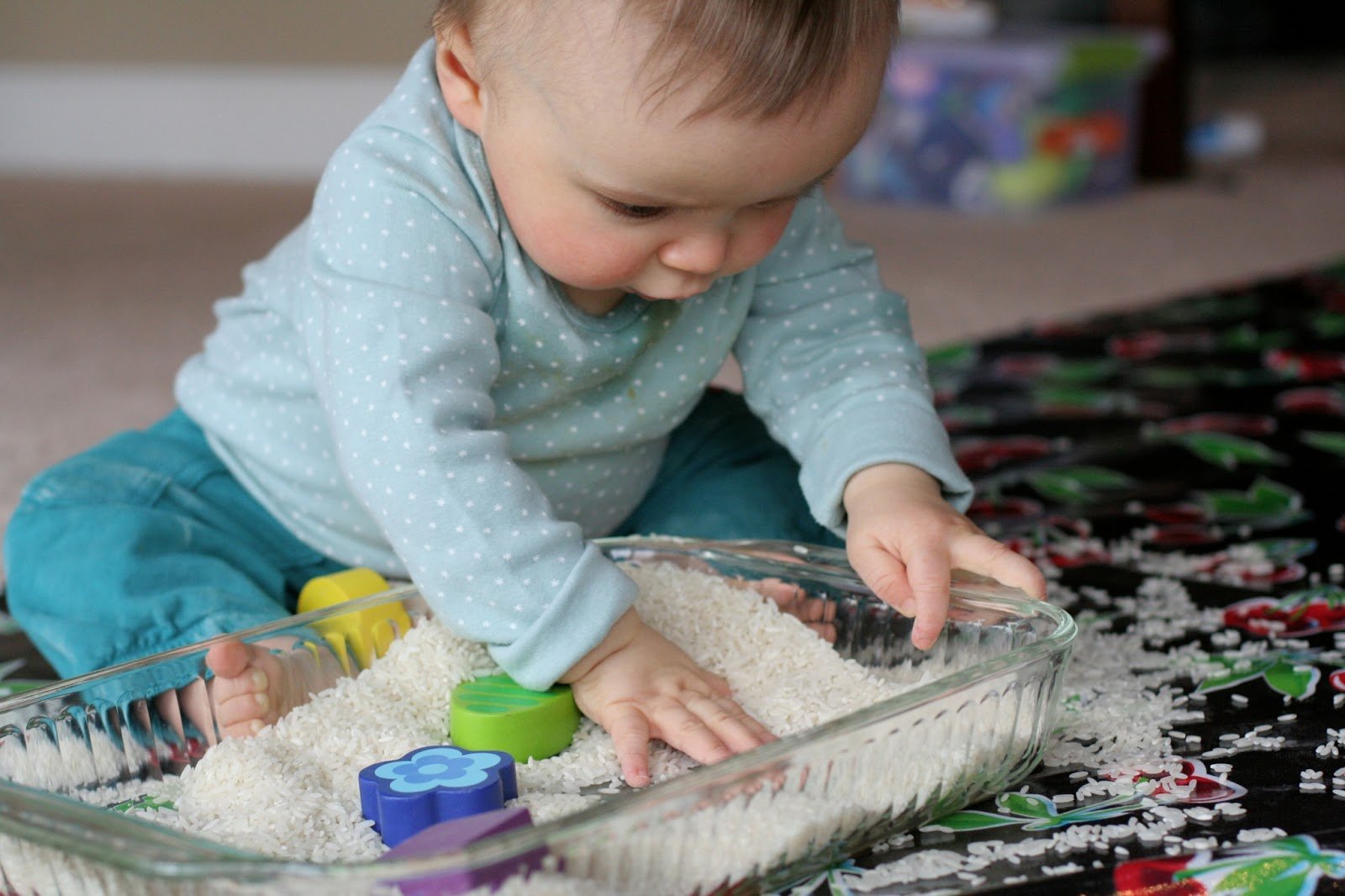Sensory play is essential for toddlers as it supports their cognitive, physical, and emotional development. At this stage, toddlers are curious and eager to explore their world through their senses. Simple sensory play activities engage them and help build foundational skills such as problem-solving, motor coordination, and language development. Here are a few easy-to-setup sensory activities that will delight and educate toddlers.
Water Play
Water play is one of the easiest and most engaging sensory activities for toddlers. Fill a shallow basin or tray with water, and provide toys, cups, or sponges for scooping, pouring, and splashing.
This activity allows toddlers to explore concepts like volume, cause and effect, and texture. They can feel the water’s temperature, observe it moving, and enjoy the sensory experience. Additionally, water play helps develop fine motor skills as toddlers practice pouring and squeezing.

Sensory Bins
Sensory bins are versatile and simple to set up. Fill a plastic bin with materials like rice, beans, pasta, or sand. Add small toys, scoops, spoons, and containers for toddlers to explore and manipulate.
Sensory bins encourage tactile exploration, and toddlers can learn about different textures and materials. This activity also promotes problem-solving skills as toddlers figure out how to move, pour, and sort the materials. You can also change the contents of the sensory bin based on the season or toddler’s interests.
While exploring sensory play ideas for toddlers, I discovered how simple household items can create engaging learning experiences. Many parents find that incorporating varied textures and colors keeps little ones entertained for hours. For those seeking more creative inspiration, https://jokaviproom.nokyc-casino.io offers interesting perspectives on interactive activities. Remember that sensory bins with rice or water beads provide excellent tactile stimulation. These gentle play sessions support cognitive development while letting children explore safely. Always supervise toddlers during sensory activities to ensure their wellbeing.
Finger Painting
Finger painting is a wonderful way for toddlers to explore creativity and textures. Use washable, non-toxic paints and large sheets of paper for a mess-free experience.
This activity allows toddlers to feel the paint’s texture, mix colors, and express themselves artistically. It stimulates their senses of touch and sight and encourages creativity and self-expression. You can also introduce new sensory materials, like adding sand or fabric to the paint for extra texture.
Playdough Fun
Playdough is a classic sensory play material that can provide hours of fun for toddlers. You can buy playdough or make your own with simple ingredients like flour, salt, and water.
Toddlers love to squish, roll, flatten, and mold playdough, which helps strengthen their hand muscles and coordination. This activity encourages creativity, as toddlers can make shapes, animals, or patterns. Additionally, the soft, squishy texture provides a calming sensory experience.
Nature Walks and Collection
Taking a walk outside with your toddler gives them a chance to explore nature’s sensory experiences. Encourage them to touch different textures, like leaves, tree bark, or flowers, and listen to natural sounds like birds or wind rustling.
You can collect interesting items, such as pinecones, rocks, or flowers, and examine them together. This activity stimulates their sense of sight, touch, and hearing while fostering a deeper connection to the natural world.
Music and Movement
Introduce toddlers to different types of music and sound by playing various instruments, like drums, maracas, or xylophones. You can also sing songs or play recorded music and encourage toddlers to move to the rhythm.
This sensory activity enhances auditory development and helps toddlers practice gross motor skills as they dance, stomp, or sway. Music also promotes emotional expression and can help toddlers learn about patterns and rhythm.
Texture Exploration Bags
Fill small bags or socks with different materials that toddlers can feel. You can include soft cotton, bumpy bubble wrap, fuzzy felt, or smooth fabric.
Allow toddlers to explore each texture, encouraging them to describe how it feels. This simple activity enhances their tactile sensitivity and promotes vocabulary development as they learn words to describe what they touch.
Sensory Bottles
Sensory bottles are a calming and engaging activity for toddlers. Fill clear plastic bottles with colorful objects like beads, glitter, water, or small toys. Seal the bottle tightly and let toddlers shake, roll, or observe the items inside.
This activity provides visual stimulation and helps toddlers practice focus and concentration as they watch the objects move. It can also encourage language skills as toddlers describe what they see and hear.
Ice Cube Play
Ice cube play is a cool and simple sensory experience. Freeze small toys, like plastic animals or shapes, inside ice cubes. Toddlers can use warm water, spoons, or even their hands to melt the ice and reveal the hidden objects.
This activity stimulates the senses of touch and sight and teaches toddlers about cause and effect. The cold sensation of the ice can also be soothing and refreshing for little ones.
Shaving Cream Fun
Shaving cream is a fun and messy way to engage toddlers in sensory play. Spread a layer of shaving cream on a tray or table, and let toddlers explore it with their hands. You can also add food coloring or glitter for extra excitement.
This activity allows toddlers to experience the softness and slipperiness of the cream while practicing fine motor skills like drawing shapes or making marks. It’s also a great way to explore cause and effect, as toddlers learn how objects interact with the cream.
Conclusion
Sensory play offers toddlers the chance to explore their world and develop important skills in a fun, hands-on way. From water play to finger painting, these simple activities encourage sensory exploration and creativity, while supporting cognitive, motor, and language development. By incorporating sensory play into your toddler’s routine, you provide them with the tools to grow and learn in an exciting and engaging environment.









